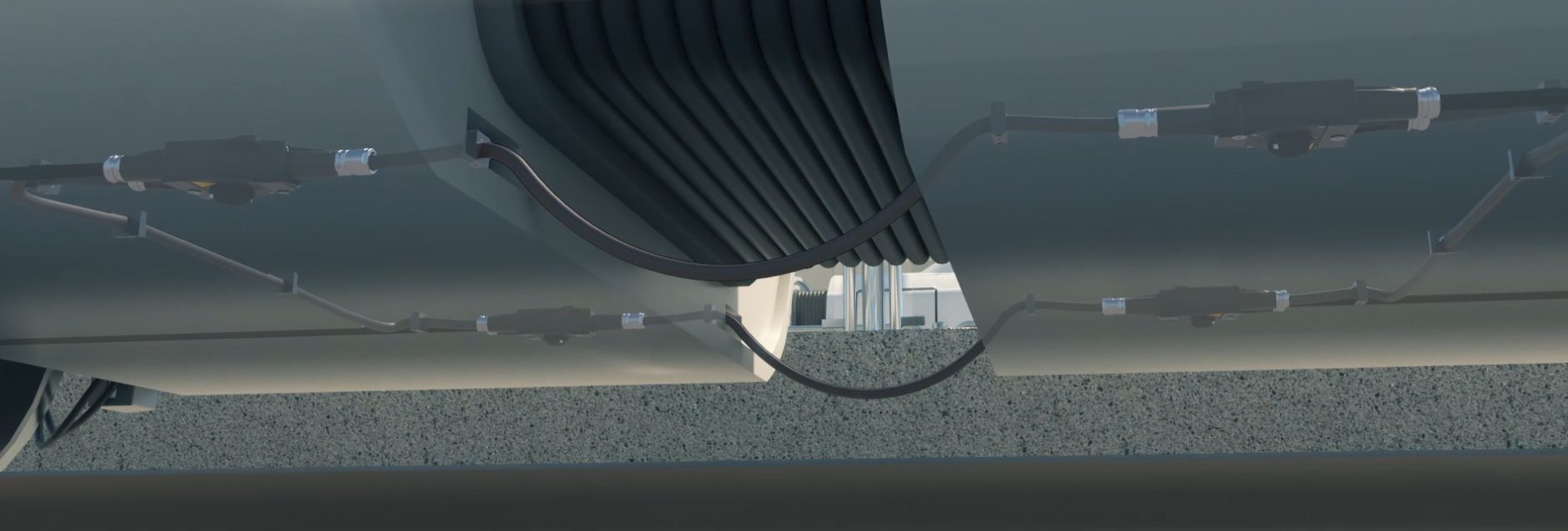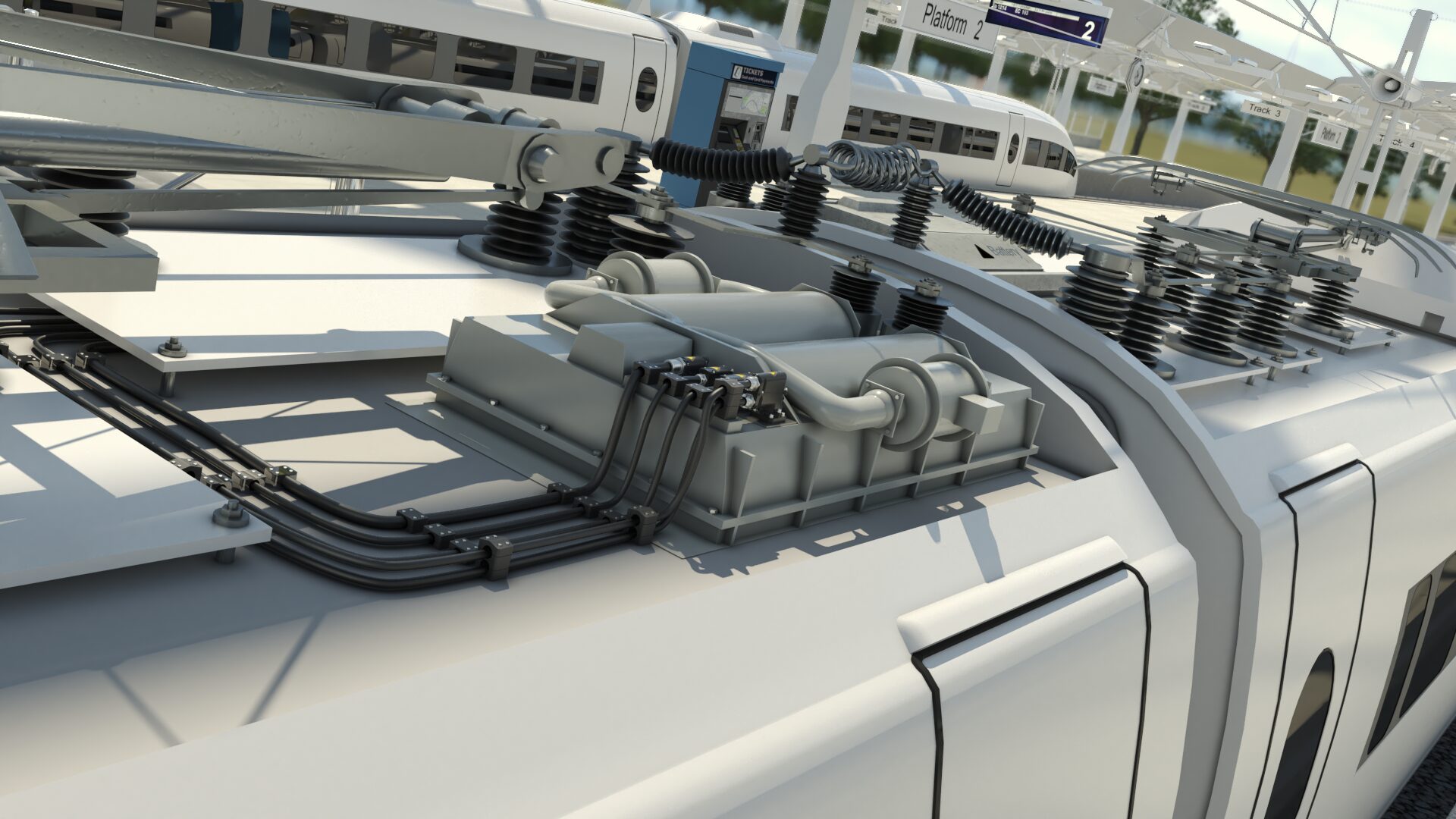New Rail Connectors for Energy Distribution for Rail Vehicles
A new generation of rail connectors has been designed to handle the hazards of this heavy-duty transport mode. Simple and quick installation and easy maintenance are just as important to keeping things rolling.

Rail connectors are undergoing an upgrade as rail networks around the world are expanding quickly to match the growing human population. With more people comes a need for more vehicles, more agricultural products, more building materials, and other large-scale commodities that are most economically moved via rail. As people expand the areas they live in and travel to, passenger rail networks are also expanding too. According to the IEA (International Energy Agency), passenger and freight activity will more than double by 2050.
A number of trends are driving change in rail connector design. New railway infrastructure is now being built in areas that were once considered too remote or too environmentally challenging to reach via rail. As a result, the need for highly ruggedized equipment that can handle harsh environments, intense weather, ice, debris, and heavy use is paramount; in the rail industry, heavy-duty components have always been a priority, but today’s complex rail technologies demand greater functionality than ever under these conditions. Safety and reliability standards are continuously evolving as well, challenging rail connector suppliers to stay compliant with new science, materials, and technologies.
Energy efficiency is also a major priority: Manufacturers of railway vehicles are trying to reduce the energy consumption per passenger-kilometer driven, in part with weight reduction strategies. Rail connectors must be rugged yet as lightweight as possible. Meanwhile, today’s trains are highly connected, linking rail operators, freight, and passengers with the cloud. In order to meet real-time communication demands, rail vehicles need powerful networks and data interfaces that can also meet the special requirements of rail transport.
To reflect changing technical standards and evolving demands from rolling stock suppliers and systems integrators, a new generation of heavy-duty rail connectors is needed. Rail connectors and cables must be surrounded by robust housings and shielded against electromagnetic interference (EMC). They must contribute to weight savings goals. They must also be ruggedized enough to provide a long operational lifetime and also easy to install, repair, and upgrade.

HARTING revamped its range of transformer connectors, jumper cables, and onboard power distributors. The Han HPR High Performance Transformer Connector has been developed specifically for rail applications.
As part of ongoing efforts to ensure components comply fully with the latest standards for high power electrical equipment, rail connector suppliers must continually review their products and update them accordingly. For example, HARTING revamped its range of transformer connectors, jumper cables, and onboard power distributors when existing connectors linking the transformer to the converter no longer complied with the relevant railway standards.
To maintain compliance and improve performance, HARTING developed the HPTC series by focusing on clearance and creepage distances, behavior under shock and vibration, as well as protection against external impacts. Compliance with railway standard EN 50467 (connectors for rail vehicles) and implementation of the requirements for IEC 60137 (insulated bushings for AC voltages above 1000 V) were motivations for the product revisions. The updated products have been validated by independent verification bodies.
A new and improved rail connector
A carefully considered design made the HPTC ready for today’s complex rail applications. The connector’s hoods, housing, and cable glands were upgraded to ensure a stable connection between the transformer and the train busbar under harsh environmental conditions. Existing fastenings on the transformer itself were designed for potential reuse, eliminating the need for disruptive design changes.
Ease of use was a key consideration during the design process. The result is a crimped contact on the cable side that can be inserted into a three-part, touch-proof insulating body, while a cable gland protects against dust and moisture ingress. Since there is an uninterrupted circumferential metallic contact between the housing parts, the HPTC provides full EMC safety. In this, the first transformer connector specifically designed for shielded cable connection, residual currents can be discharged through the housing via two separate contact zones.
Cable housing considerations
The connector design must also take into consideration the cable it will be paired with. To that end, HARTING worked with Siemens Mobility to develop new corresponding products. The result is the VarioShell, a less complex standard interface for jumper applications which is future-proofed, easy to install and maintain, and durable. These products are expected to be deployed on the updated Viaggio hauled coach design now being built for the European and North American markets.

The Han HPR VarioShell has a split housing concept for jumper applications that can be fitted from both inside and outside the vehicle. Its accessible design means that not all connections need to be interrupted when a fault occurs. Faulty conductors or contacts can be identified by opening the housing cover.
The contours of the VarioShell allow dirt deposits to slide off, while bespoke channels guide water away from the fixing screws to mitigate the risk of rust.
A curved upper edge ensures that ice and snow move and slide down the sides without exerting pressure on the housing, increasing the service life of the interface.
The VarioShell can be combined with the entire HPR rail portfolio. It can house mounting frames, cable managers and shielding plates to route and secure cables of different diameters. It can be used as a surface-mounted or panel-mounted housing and serves as an alternative to distribution boxes for use on the vehicle roof, outer wall or on the bogie.

As part of the Viaggio program, the Han HPR TrainPowerLine is an alternative to conventional UIC 552 power distribution products. It has been tailored to modern rolling stock designs where multiple vehicles are linked by a train power busbar. The interface offers weight advantages of up to 10 kg per vehicle compared to earlier equivalent components.
At the heart of the design was a request from a rolling stock manufacturer to simplify the complexity of the train busbar while maintaining safe and effective functionality. HARTING has reduced the number of parts significantly compared to alternative designs, while ensuring that the pin and socket contacts are safe to touch; earthing contacts are located at the top and bottom of the housing. Angled ridges on the surface help to reduce dirt and ice accumulation.
Legacy underfloor cabling has typically been designed as hard wiring, but TPL makes all connection points pluggable, thus enabling the customer to preassemble all the necessary cable connector units. The housings are equipped with Han HC Modular high-current contacts that can transmit power of more than 800 A and 3 kV AC/ DC. The housing is made of corrosion-resistant aluminium die castings. The result is a uniform interface design that can be used across the whole of the train’s underfloor distribution network.
Denny Hellige has been Product Manager Han HPR and HC Modular at HARTING since 2018. Before that, he worked for TE Connectivity, among others. He is the inventor of several patented solutions in the cable/plug area. Learn more about HARTING’s rail connector innovations.
Like this article? Check out our other Harsh Environment articles, our Transportation Market Page, and our 2024 Article Archives.
Subscribe to our weekly e-newsletters, follow us on LinkedIn, Twitter, and Facebook, and check out our eBook archives for more applicable, expert-informed connectivity content.





